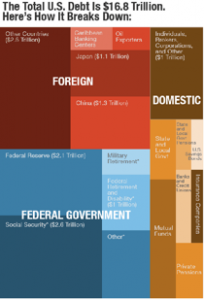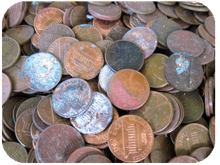 In the fall of 2013 the U.S. came perilously close to defaulting on its debt. Already reeling from a two-week government shutdown, lawmakers were able to come together at the eleventh hour to raise the debt ceiling through February 7, 2014. If it had failed to do so, then for the first time in history the U.S. would have been unable to pay the interest on Treasury bonds. This would have sent global markets into disarray while almost certainly setting Continue reading
In the fall of 2013 the U.S. came perilously close to defaulting on its debt. Already reeling from a two-week government shutdown, lawmakers were able to come together at the eleventh hour to raise the debt ceiling through February 7, 2014. If it had failed to do so, then for the first time in history the U.S. would have been unable to pay the interest on Treasury bonds. This would have sent global markets into disarray while almost certainly setting Continue reading





